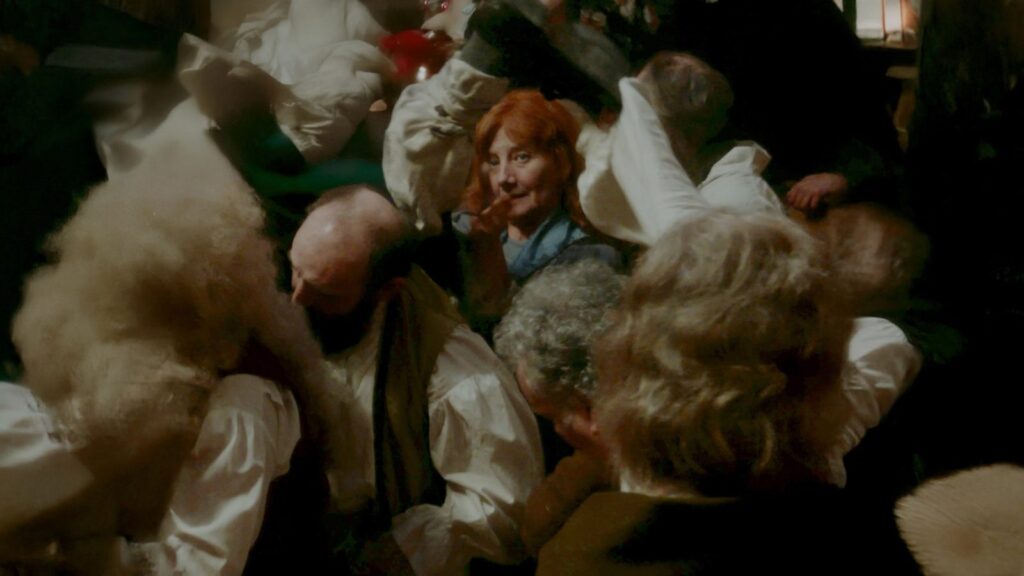Title: Loynes
Year: 2025
Country: Belgium
Language: In English and French with English Subtitles
Director: Dorian Jespers
The opening scenes of this film take the audience for a wild ride through a continuous, tunneling and chaotic windstorm with no linear direction. The eternal nature of this otherworldly scene is emphasised by the soundscape (created by Thomas Becka, Leo Caresio, Raf Enckels and Zakhar Semirkhanov) and the cinematography of Arnaud Aberola. The leitmotif of curvatures, tunnelling and the use of light and dark remain throughout the film.
Dorian Jespers (Director and co-producer) has set us up for a brilliant and thoughtful story following the travels of a corpse from its burial site to its judgement. This film opens somewhere in the 19thcentury BCE, with a crowd of people winching up a shrouded corpse from great depths and then transporting it down a series of tunnels to a cavernous court room.
The overpopulated courtroom is in total disorder inhabited by a rabble of people and a cacophony of voices. As the corpse is moved through the crowd down the various levels of the court room, the camera occasionally blurs to give a sense of the perspective through the corpse’s eyes.
Through the brief moments when there is a bit of order, someone manages to question whether they can even put a corpse on trial without a name and whether a body has a soul… (Note; there is a hint as to who the body is; see bottom of review if you want the hint).
A couple of coherent statements manage to make their way out through the tumultuous crowd but remain unaddressed. “To be dead does not mean, not to be”. Also, that, past, present and future is not linear but a circle. It is telling that the final scene set somewhere in the future is a of hand keeping an ever closing, elevator door open.
The director did a superb job of integrating the terrific screenplay (co-written with Raphael Meyer), with masterful sound and clever camera work to create an entertaining and thought provoking outstanding film.
(Hint: if you can figure out who Ms. Blake is; then you will know who the corpse is and which cemetery he was buried in, why the court thought they could try him and why the curved and tunnelled cinematography?




